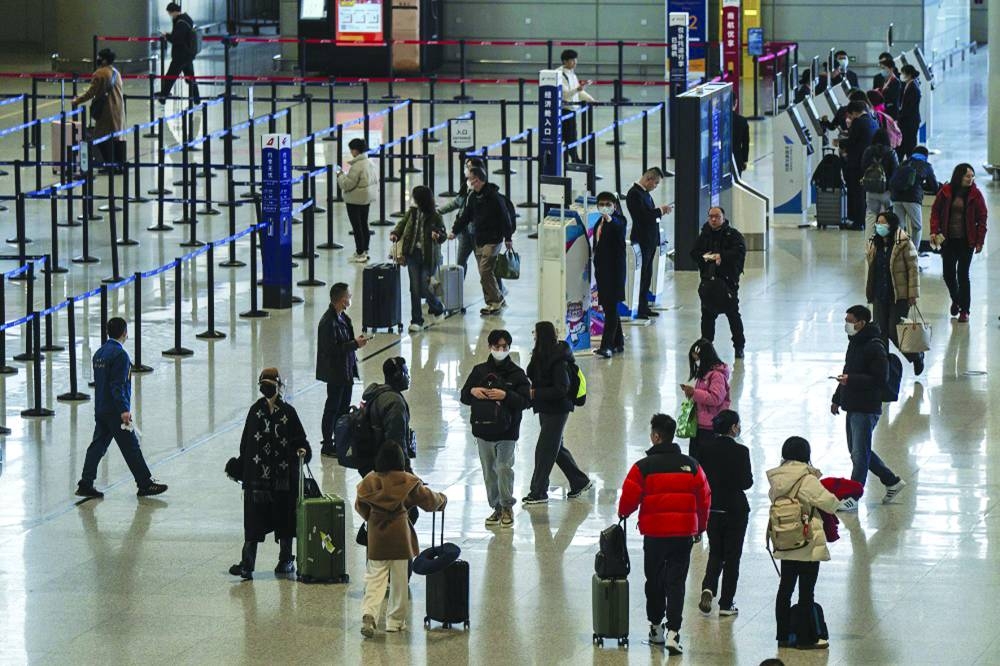China and India are two of the most crucial markets in the global aviation industry due to their massive populations, rapid economic growth, and increasing demand for air travel.
China is already the world's second-largest aviation market and projected to surpass the United States as the largest by the mid-2030s.
On the other hand, India is the third-largest domestic aviation market and one of the fastest-growing globally, with demand driven by a rising middle class.
Recently, China and India agreed to resume direct air services after nearly five years, India's foreign ministry said.
The in-principle agreement to resume flight services between the two countries, which are suspended since 2020 after the Covid pandemic, was taken during the recent visit of India’s top diplomat Vikram Misri to Beijing, as per the country’s Ministry of External Affairs.
According to reports, both sides will negotiate a framework on the flights in a meeting that will be held at an "early date", the ministry said after a meeting between India's top diplomat and Chinese Foreign Minister Wang Yi.
"The meet also agreed in principle to resume direct air services between the two countries; the relevant technical authorities on the two sides will meet and negotiate an updated framework for this purpose at an early date," as per India’s Ministry of External Affairs.
Prior to the halting of air services on the India-China route, the then government-owned Air India and largest domestic carrier IndiGo was operating their flight services to China, according to CNBC TV18.
Air India had been operating to China since December 2003 while IndiGo started flying to the neighbouring China only from October 2019 connecting Chengdu from Delhi and Guangzhou with Kolkata.
Though later, the airline also announced its plans to connect Chengdu with Mumbai, the plan could not fructify.
However, just after nearly four months of the launch of these services in September 2019, all air passenger services had to be temporarily called off in March 2020 owing to the pandemic, with China no exception, CNBC TV18 said.
Though the air bubble pact during the pandemic with some 20 countries saw flights to China resuming partially as well, the border issues between the two countries kept the full aviation ties also at bay.
However, as China remains India’s largest trading partner, with bilateral trade reaching $101.73bn in financial year 2024, travellers generally fly on airlines of a third country such as Thailand, Singapore, or Hong Kong with one stop for reasons like trade, business and tourism visits.
According to prominent aviation analyst Ashwini Phadnis, the announcement will see traction among airlines from both the sides. Indian airlines have always been keen to operate to China. In the early 2000s Air Sahara planned to start services to Guanzhou.
While that plan did not materialise, Jet Airways started a Mumbai-Shanghai-San Francisco flight in 2008.
The latest announcement will see passenger flights to mainland China as Air India and IndiGo are already flying to Hong Kong.
In addition, IndiGo operates an A321F all freighter between Ezhou (a new logistic airport) and Kolkata three times a week but in some weeks the numbers go up depending on demand.
IndiGo has also been operating freighter services between Guangzhou and Kolkata.
The scope for commercial airlines flying from the two countries can be gauged from the fact that at one time there were over 500 direct flights operated by airlines of the two countries, the New Delhi-based Phadnis pointed out.
With Indian airlines taking deliveries of 1,300 aircraft in the next couple of years they will look to open new routes, he said.
“With the decision to enhance people-to-people contact being taken at a senior level, at the talks between national security levels on both the sides, it is hoped that the bureaucratic paperwork required for starting flights is not a slow torturous process delaying the implementation of the decision.
“However, one factor which could be an impediment is the issue of visas for Indians wanting to go China and for Chinese nationals wanting to come here. Getting a tourist visa can be an uphill task for citizens of both the countries,” Phadnis noted.
Analysts say both China and India have seen rapid urbanisation and increasing disposable incomes, leading to higher air travel demand.
Government policies, such as China’s ‘Belt and Road Initiative’ and India’s ‘UDAN’ regional connectivity scheme, further boost aviation expansion.
China is one of the largest outbound tourism markets. India’s international travel demand is growing, supported by rising incomes and visa reforms.
Seeing huge prospects, airlines in China and India consistently place large aircraft orders.
Chinese airlines have already placed major orders from Boeing and Airbus, with significant growth in domestic aircraft manufacturing (COMAC C919) as well.
Leading Indian carriers have also placed massive orders with both Boeing and Airbus, signalling long-term growth.
For those looking at potential investments or partnerships in this sector, the two markets offer immense opportunities. Undoubtedly, both countries are shaping the future of global aviation.
Pratap John is Business Editor at Gulf Times. X handle: @PratapJohn.

Travellers at the Hongqiao International Airport in Shanghai. China and India are two of the most crucial markets in the global aviation industry due to their massive populations, rapid economic growth, and increasing demand for air travel.

